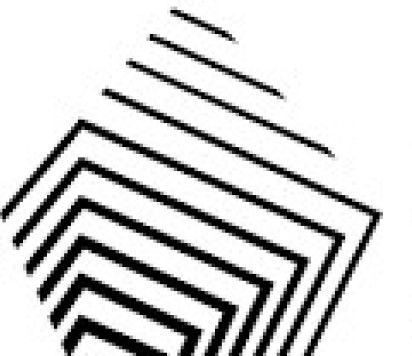Biological systems - including the simplest cells - exhibit a broad range of functions to thrive in their environment. Research in the Imperial College Centre for Synthetic Biology is focused on the possibility of engineering the underlying biochemical processes to solve many of the challenges facing society, from healthcare to sustainable energy. In particular, we model, analyse, design and build biological and biochemical systems in living cells and/or in cell extracts, both exploring and enhancing the engineering potential of biology.
As part of our research we develop novel methods to accelerate the celebrated Design-Build-Test-Learn synthetic biology cycle. As such research in the Centre for Synthetic Biology highly multi- and interdisciplinary covering computational modelling and machine learning approaches; automated platform development and genetic circuit engineering ; multi-cellular and multi-organismal interactions, including gene drive and genome engineering; metabolic engineering; in vitro/cell-free synthetic biology; engineered phages and directed evolution; and biomimetics, biomaterials and biological engineering.
Publications
Results
- Showing results for:
- Reset all filters
Search results
-
Journal articleKelay T, Kesavan S, Collins RE, et al., 2013,
Techniques to aid the implementation of novel clinical information systems: A systematic review
, INTERNATIONAL JOURNAL OF SURGERY, Vol: 11, Pages: 783-791, ISSN: 1743-9191- Author Web Link
- Cite
- Citations: 1
-
Journal articleChappell J, Freemont P, 2013,
In Vivo and In Vitro Characterization of σ<SUP>70</SUP> Constitutive Promoters by Real-Time PCR and Fluorescent Measurements
, SYNTHETI C BIOLOGY, Vol: 1073, Pages: 61-74, ISSN: 1064-3745- Author Web Link
- Cite
- Citations: 3
-
Journal articleWeenink T, Ellis T, 2013,
Creation and Characterization of Component Libraries for Synthetic Biology
, SYNTHETI C BIOLOGY, Vol: 1073, Pages: 51-60, ISSN: 1064-3745- Author Web Link
- Cite
- Citations: 1
-
Conference paperTay D, Poh CL, Goh C, et al., 2013,
An Evolutionary Data-Conscious Artificial Immune Recognition System
, 15th Genetic and Evolutionary Computation Conference (GECCO), Pages: 1101-1108 -
Book chapterGoers L, Kylilis N, Tomazou M, et al., 2013,
Engineering Microbial Biosensors
, MICROBIAL SYNTHETIC BIOLOGY, Editors: Harwood, Wipat, Publisher: ELSEVIER ACADEMIC PRESS INC, Pages: 119-156, ISBN: 978-0-12-417029-2- Author Web Link
- Cite
- Citations: 11
-
Journal articleBoehm CR, Freemont PS, Ces O, 2013,
Design of a prototype flow microreactor for synthetic biology <i>in vitro</i>
, LAB ON A CHIP, Vol: 13, Pages: 3426-3432, ISSN: 1473-0197- Author Web Link
- Cite
- Citations: 25
-
Journal articleOdendall C, Rolhion N, Foerster A, et al., 2012,
The <i>Salmonella</i> Kinase SteC Targets the MAP Kinase MEK to Regulate the Host Actin Cytoskeleton
, CELL HOST & MICROBE, Vol: 12, Pages: 657-668, ISSN: 1931-3128- Author Web Link
- Cite
- Citations: 60
-
Journal articleLu D, Silhan J, MacDonald JT, et al., 2012,
Structural basis for the recognition and cleavage of abasic DNA in <i>Neisseria meningitidis</i>
, PROCEEDINGS OF THE NATIONAL ACADEMY OF SCIENCES OF THE UNITED STATES OF AMERICA, Vol: 109, Pages: 16852-16857, ISSN: 0027-8424- Author Web Link
- Cite
- Citations: 16
-
Journal articleLossi NS, Manoli E, Simpson P, et al., 2012,
The archetype Pseudomonas aeruginosa proteins TssB and TagJ form a novel subcomplex in the bacterial type VI secretion system
, MOLECULAR MICROBIOLOGY, Vol: 86, Pages: 437-456, ISSN: 0950-382X- Author Web Link
- Cite
- Citations: 20
-
Journal articleYuan Y, Stan G-B, Warnick S, et al., 2012,
Minimal realization of the dynamical structure function and its application to network reconstruction
Network reconstruction, i.e., obtaining network structure from data, is acentral theme in systems biology, economics and engineering. In some previouswork, we introduced dynamical structure functions as a tool for posing andsolving the problem of network reconstruction between measured states. Whilerecovering the network structure between hidden states is not possible sincethey are not measured, in many situations it is important to estimate theminimal number of hidden states in order to understand the complexity of thenetwork under investigation and help identify potential targets formeasurements. Estimating the minimal number of hidden states is also crucial toobtain the simplest state-space model that captures the network structure andis coherent with the measured data. This paper characterizes minimal orderstate-space realizations that are consistent with a given dynamical structurefunction by exploring properties of dynamical structure functions anddeveloping an algorithm to explicitly obtain such a minimal realization.
-
Journal articleYang X, Han R, Guo Y, et al., 2012,
Modelling and performance analysis of clinical pathways using the stochastic process algebra PEPA
, Bmc Bioinformatics, Vol: 13, ISSN: 1471-2105 -
Journal articleBlount BA, Weenink T, Ellis T, 2012,
Construction of synthetic regulatory networks in yeast
, FEBS LETTERS, Vol: 586, Pages: 2112-2121, ISSN: 0014-5793- Author Web Link
- Cite
- Citations: 50
-
Journal articleKitney R, Freemont P, 2012,
Synthetic biology - the state of play
, FEBS LETTERS, Vol: 586, Pages: 2029-2036, ISSN: 0014-5793- Author Web Link
- Cite
- Citations: 51
-
Journal articleAnderson J, Strelkowa N, Stan G-B, et al., 2012,
Engineering and ethical perspectives in synthetic biology
, EMBO Reports, Vol: 13, Pages: 584-590, ISSN: 1469-221XSynthetic biology has emerged as an exciting and promising new research field, garnering significant attention from both the scientific community and the general public. This interest results from a variety of striking features: synthetic biology is a truly interdisciplinary field that engages biologists, mathematicians, physicists and engineers; its research focus is applied; and it has enormous potential to harness the power of biology to provide scientific and engineering solutions to a wide range of problems and challenges that plague humanity. However, the power of synthetic biology to engineer organisms with custom‐made functionality requires that researchers and society use this power safely and responsibly, in particular when it comes to releasing organisms into the environment. This creates new challenges for both the design of such organisms and the regulatory process governing their creation and use.
-
BookKitney RI, 2012,
Synthetic Biology - A Primer
, Publisher: Imperial College Press London -
Journal articleWeston DJ, Adams NM, Russell RA, et al., 2012,
Analysis of spatial point patterns in nuclear biology
, PLoS ONE, Vol: 7, ISSN: 1932-6203There is considerable interest in cell biology in determining whether, and to what extent, the spatial arrangement of nuclear objects affects nuclear function. A common approach to address this issue involves analyzing a collection of images produced using some form of fluorescence microscopy. We assume that these images have been successfully pre-processed and a spatial point pattern representation of the objects of interest within the nuclear boundary is available. Typically in these scenarios, the number of objects per nucleus is low, which has consequences on the ability of standard analysis procedures to demonstrate the existence of spatial preference in the pattern. There are broadly two common approaches to look for structure in these spatial point patterns. First a spatial point pattern for each image is analyzed individually, or second a simple normalization is performed and the patterns are aggregated. In this paper we demonstrate using synthetic spatial point patterns drawn from predefined point processes how difficult it is to distinguish a pattern from complete spatial randomness using these techniques and hence how easy it is to miss interesting spatial preferences in the arrangement of nuclear objects. The impact of this problem is also illustrated on data related to the configuration of PML nuclear bodies in mammalian fibroblast cells.
-
Journal articleParker KH, Alastruey J, Stan G-B, 2012,
Arterial reservoir-excess pressure and ventricular work
, MEDICAL & BIOLOGICAL ENGINEERING & COMPUTING, Vol: 50, Pages: 419-424, ISSN: 0140-0118- Author Web Link
- Cite
- Citations: 49
-
Journal articleBlount BA, Weenink T, Vasylechko S, et al., 2012,
Rational Diversification of a Promoter Providing Fine-Tuned Expression and Orthogonal Regulation for Synthetic Biology
, PLOS ONE, Vol: 7, ISSN: 1932-6203- Author Web Link
- Open Access Link
- Cite
- Citations: 116
-
Journal articleNiwa H, Ewens CA, Tsang C, et al., 2012,
The Role of the N-Domain in the ATPase Activity of the Mammalian AAA ATPase p97/VCP
, JOURNAL OF BIOLOGICAL CHEMISTRY, Vol: 287, Pages: 8561-8570- Author Web Link
- Cite
- Citations: 90
-
Journal articleSilhan J, Nagorska K, Zhao Q, et al., 2012,
Specialization of an Exonuclease III family enzyme in the repair of 3' DNA lesions during base excision repair in the human pathogen Neisseria meningitidis
, Nucleic Acids Research, Vol: 40, Pages: 2065-2075, ISSN: 1362-4962We have previously demonstrated that the twoExonuclease III (Xth) family members presentwithin the obligate human pathogen Neisseriameningitidis, NApe and NExo, are important forsurvival under conditions of oxidative stress. Ofthese, only NApe possesses AP endonucleaseactivity, while the primary function of NExoremained unclear. We now reveal further functionalspecialization at the level of 30-PO4 processing forNExo. We demonstrate that the bi-functional meningococcalglycosylases Nth and MutM can performstrand incisions at abasic sites in addition to NApe.However, no such functional redundancy existsfor the 30-phosphatase activity of NExo, and thecytotoxicity of 30-blocking lesions is reflectedin the marked sensitivity of a mutant lackingNExo to oxidative stress, compared to strainsdeficient in other base excision repair enzymes. Ahistidine residue within NExo that is responsiblefor its lack of AP endonuclease activity isalso important for its 30-phosphatase activity,demonstrating an evolutionary trade off in enzymefunction at the single amino acid level. This specializationof two Xth enzymes for the 30-end processingand strand-incision reactions has notpreviously been observed and provides a newparadigm within the prokaryotic world for separationof these critical functions during baseexcision repair.
This data is extracted from the Web of Science and reproduced under a licence from Thomson Reuters. You may not copy or re-distribute this data in whole or in part without the written consent of the Science business of Thomson Reuters.
--tojpeg_1526077187403_x1.jpg)
Funders
Work in the IC-CSynB is supported by a wide range of Research Councils, Learned Societies, Charities and more.
--tojpeg_1522044096750_x4.jpg)



--tojpeg_1521994555607_x4-1.jpg)




